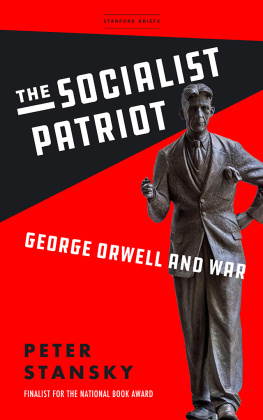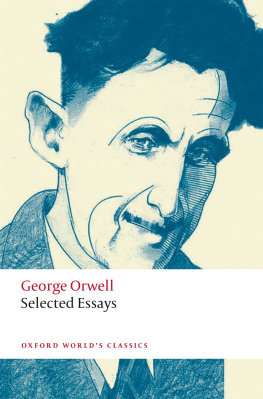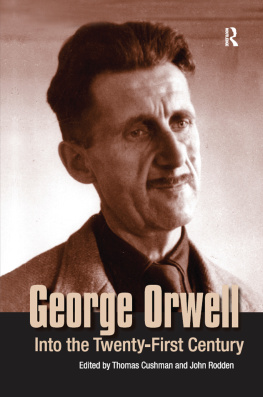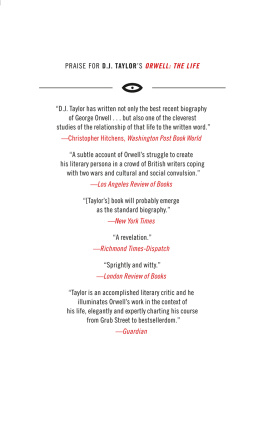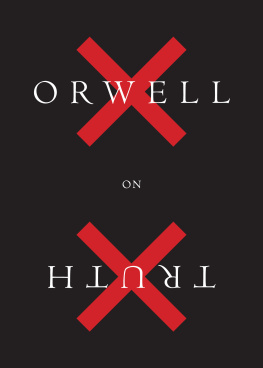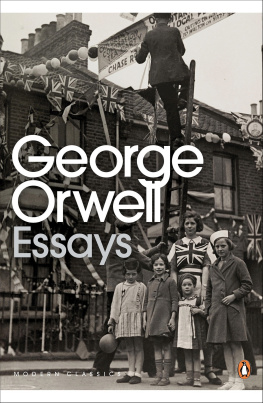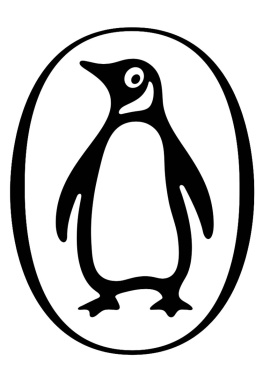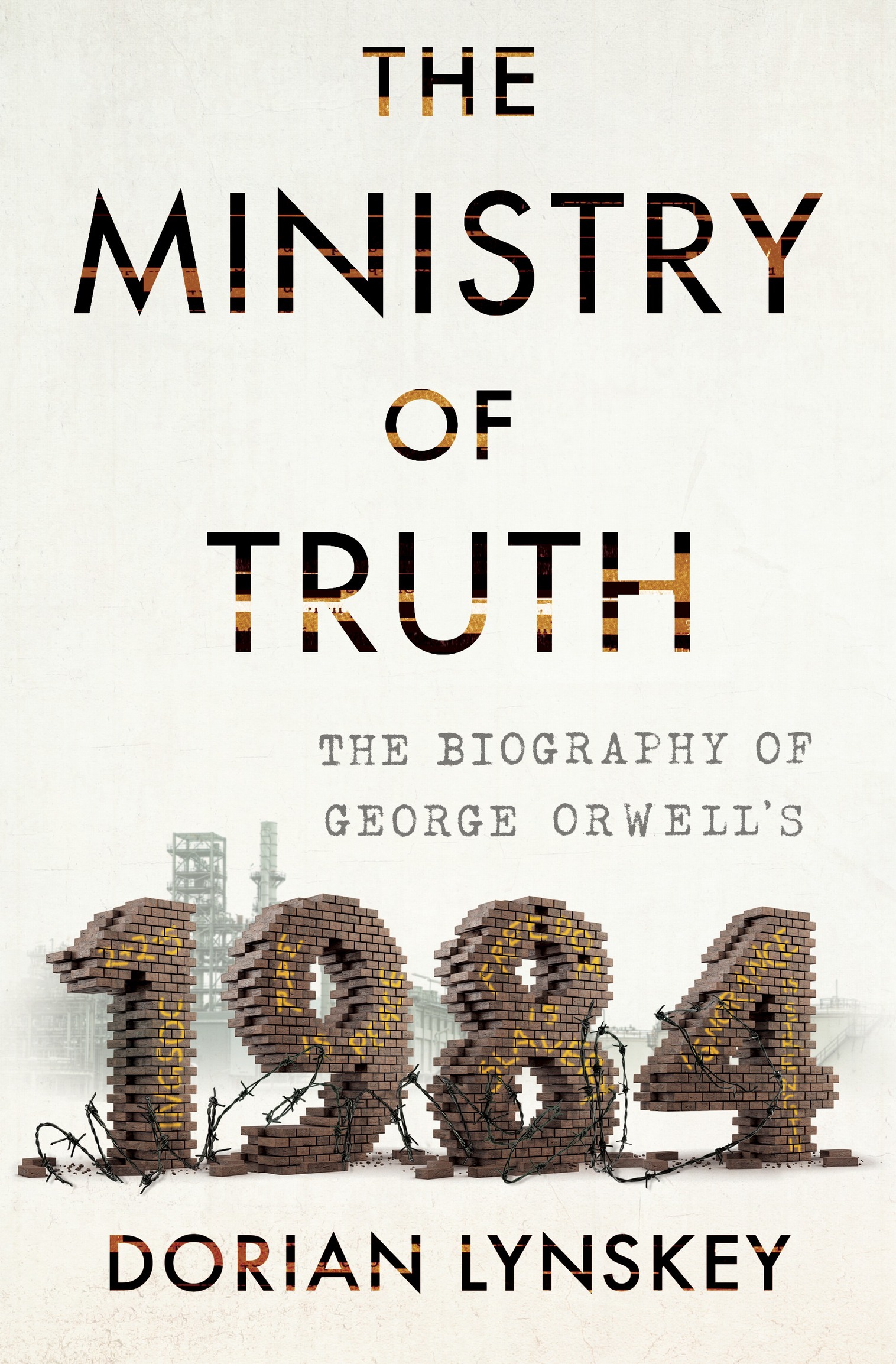All rights reserved. Published in the United States by Doubleday, a division of Penguin Random House LLC, New York, and distributed in Canada by Random House of Canada, a division of Penguin Random House Canada Limited, Toronto. Simultaneously published in Great Britain by Picador, an imprint of Pan Macmillan UK, London.
DOUBLEDAY and the portrayal of an anchor with a dolphin are registered trademarks of Penguin Random House LLC.
Its a sad commentary on our age that we find Dystopias a lot easier to believe in than Utopias: Utopias we can only imagine, Dystopias weve already had.
There was truth and there was untruth, and if you clung to the truth even against the whole world, you were not mad.
Introduction
December 1948. A man sits at a typewriter, in bed, on a remote island, fighting to complete the book that means more to him than any other. He is terribly ill. The book will be finished and, a year or so later, so will the man.
January 2017. Another man stands before a crowd, which is not as large as he would like, in Washington, DC, taking the oath of office as the forty-fifth president of the United States of America. His press secretary later says that it was the largest audience to ever witness an inaugurationperiodboth in person and around the globe. Asked to justify such a preposterous lie, the presidents adviser describes the statement as alternative facts. Over the next four days, US sales of the dead mans book will rocket by almost 10,000 per cent, making it a number-one best seller.
When George Orwells Nineteen Eighty-Four was published in the United Kingdom on June 8, 1949, in the heart of the twentieth century, one critic wondered how such a timely book could possibly exert the same power over generations to come. Thirty-five years later, when the present caught up with Orwells future and the world was not the nightmare he had described, commentators again predicted that the books popularity would wane. Another thirty-five years have elapsed since then, and Nineteen Eighty-Four remains the book we turn to when truth is mutilated, language is distorted, power is abused, and we want to know how bad things can get, because someone who lived and died in another era was clear-sighted enough to identify these evils and sufficiently talented to present them in the form of a novel that Anthony Burgess, author of A Clockwork Orange, called an apocalyptical codex of our worst fears.
Nineteen Eighty-Four has not just sold tens of millions of copies; it has infiltrated the consciousness of countless people who have never read it. The phrases and concepts that Orwell minted have become essential fixtures of political language, still potent after decades of use and misuse: Newspeak, Big Brother, the Thought Police, Room 101, the Two Minutes Hate, doublethink, unperson, memory hole, telescreen, 2 + 2 = 5, and the Ministry of Truth. Its title came to dominate a calendar year, while the word Orwellian has turned the authors own name into a capacious synonym for everything he hated and feared. The book has been adapted for cinema, television, radio, theatre, opera and ballet. It has prompted a sequel (Gyrgy Daloss 1985), a postmodern rewriting (Peter Hubers Orwells Revenge: The 1984 Palimpsest) and innumerable retorts. Even the writing of the book has inspired a 1983 BBC drama, The Crystal Spirit: Orwell on Jura, and a 2017 novel, Dennis Glovers The Last Man in Europe.Nineteen Eighty-Four has influenced novels, films, plays, television shows, comic books, albums, advertisements, speeches, election campaigns and uprisings. People have spent years in jail just for reading it. No work of literary fiction from the past century approaches its cultural ubiquity while retaining its weight. Dissenting voices such as Milan Kundera and Harold Bloom have alleged that Nineteen Eighty-Four is actually a bad novel, with thin characters, humdrum prose and an implausible plot, but even they couldnt gainsay its importance. As Orwells publisher Fredric Warburg observed, its success is extraordinary for a novel that is not designed to please nor all that easy to understand.
For any artist, the price of immense popularity is the guarantee that you will be misunderstood. Nineteen Eighty-Four is more known about than truly known. This book is an attempt to restore some balance by explaining what Orwells book actually is, how it came to be written, and how it has shaped the world, in its authors absence, over the past seventy years. The meaning of a work of art is never limited to its creators intentions but in this case Orwells intentions, too often distorted or ignored, are well worth revisiting if the book is to be understood as a book and not just a useful cache of memes. It is both a work of art and a means of reading the world.
This, then, is the story of Nineteen Eighty-Four. There have been several biographies of George Orwell and some academic studies of his books intellectual context but never an attempt to merge the two streams into one narrative, while also exploring the books afterlife. I am interested in Orwells life primarily as a means to illuminate the experiences and ideas that nourished this very personal nightmare in which everything he prized was systematically destroyed: honesty, decency, fairness, memory, history, clarity, privacy, common sense, sanity, England, and love. This means starting with his decision to fight in the Spanish Civil War in 1936, because Spain was where he first became acutely conscious of the ways in which political expediency corrupts moral integrity, language and truth itself. Ill follow him, via the Blitz, the Home Guard, the BBC, literary London and post-war Europe, to the island of Jura, where he finally wrote his novel, so as to explode the myth that Nineteen Eighty-Four was a protracted wail of despair issuing from a lonely, dying man who couldnt face the future. I want to draw attention to what he was actually thinking, and how he came to think it.
One reason it took Orwell so long to write Nineteen Eighty-Four is that it synthesised ideas that he had been developing for most of his writing life. The book was the consummation of years of thinking, writing and reading about utopias, super-states, dictators, prisoners, propaganda, technology, power, language, culture, class, sex, the countryside, rats and more, often to the point where it becomes impossible to attribute a particular phrase or idea to a single source. Although Orwell said little about the evolution of the novel, he left a paper trail thousands of pages long. Even if he had lived decades longer, Nineteen Eighty-Four would have been the end of something: as a writer, he would have needed to start again.


